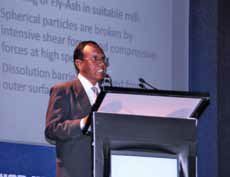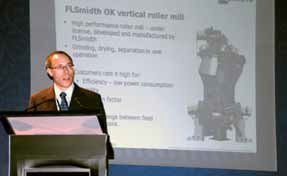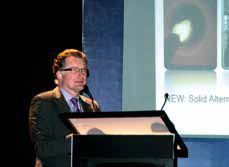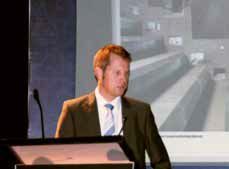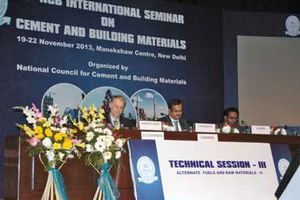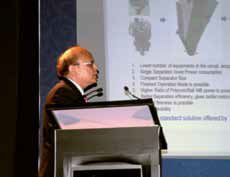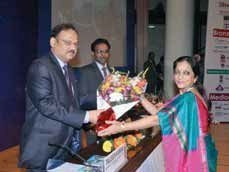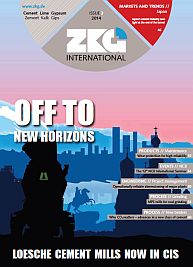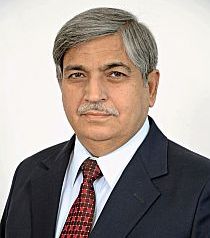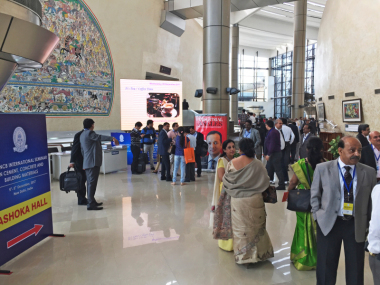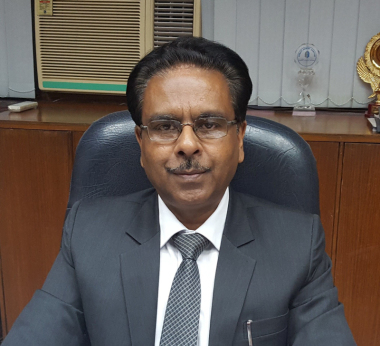The 13th NCB International Seminar on Cement & Building Material concludes
The 13th NCB International Seminar on Cement & Building Material was conducted at the Manekshaw Centre, New Delhi/India from 19-22 Nov, 2013 under the aegis of the National Council for Cement and Building Materials, the Indian umbrella organization under the administrative control of the Ministry of Commerce and Industry, Government of India. Every two years NCB organizes this international seminar that offers an exchange of ideas for manufacturers of cement, lime, gypsum and other building materials, users, construction agencies, plant vendors and machinery suppliers, designers, scientists and academics to come together.
Over the years the number of participants increased recently up to over 800 and reflects the importance of the Indian market and this conference. Supplementary to the seminars a technical exhibition on the themes of the seminar has been organized in parallel, where 135 international companies presented their offers at their booths.
The seminar was inaugurated by His Excellence Union Minister of State for Commerce and Industry - Dr. E.M. Sudarsana Natchiappan and the inaugural session was graced by top management of the industry and many high ranking officials. Addressing foreign investors he invited the industry to transfer technology and to support a growing young society. In his welcome address, Mr. Ashwani Pahuja, Director General of NCB outlined his thoughts for green and sustainable growth using the three Ps - Profit, People and Planet. He cited the WBCSD Low-Carbon Roadmap as a committing document for the Indian Cement Industry identifying the main projects for GHG reduction, process optimization and development of new binder systems as there are fly ash, slag or composite cements. Also, he stated that co-processing of alternative fuel and raw material (AFR) is expected to play an important role in the future of the Indian cement industry beside waste heat recovery, energy efficient grinding systems or the development of new binder systems and their durable application.
During the four days, over 100 experts from India and abroad partly presented concurrently over twenty sessions with themes revolved around material sourcing, management and quality assurance, alternative chemical approaches and cement types, nanotechnology and its environmental relief as well as its economical benefits. Cost cutting and sustainability were the fundamental issues of many presentations as well as of the special lecture by Prof. Karen Scrivener on low carbon cement based on clinker, calcined clay and limestone.
A large spectrum of case studies is shown by real cement engineers including specification of AFR, latest technologies for waste pre-processing to appropriate process fuels as well as solutions for storage and handling, latest generation of main burners and newest combustion devices for lump size alternative fuels are shown. The effects of partial substitution of pet coke and coal on the pyroprocess, clinker and impediments for higher thermal substitution rate are discussed, too. And in the end the experiences with alternative raw materials and secondary cementitious materials in cement and concrete are addressed, too. The Co-Chairman, Dr. Hubert Baier from WhiteLabel-TandemProjects and Editor-in-Chief of ZKG International, summed up the expert’s session on AFR with the comparison of Sir Edward Salisbury’s wording ‘A weed is a flower growing in the wrong place’ and leads also to the conclusion that waste is also a resource in the wrong place. But after pre-processing highly educated real experts learn to accept and see the potential of that resource as an area of new advantages. Great efforts must be made to increase the recent thermal substitution rate (TSR) of 1 %.
Projects in new plants and plant optimization have resulted in modern production lines and single mill solutions for raw material, clinker, slag and additives. Developments in the new generation of drive system with integrated motor, multi drive concept for large capacity VRMs, flexible grinding system designs for slag and advanced separator design to enhance roller press output were presented. Operational experiences with different types of grinding systems for raw material, coal and cement grinding were also presented, too. Slag grinding under pressure could be achieved at significantly low specific energy consumption. The efficacy of the VRM for coal and pet coke grinding with low power consumption and less wear and tear was also presented.
The latest trends in handling, weighing and dosing systems for raw materials including AFR were presented, as well. These included rotary weigh-feeders for metering pulverized coal and pre-processed alternative fuels. Innovative solutions to mitigate fugitive dust such as automated cement packing, rapid loading and dispatch systems for cement or fly ash conveying were highlighted.
Technical papers on the pyroprocess highlighting advanced calciner and burner geometry designs, particularly for waste derived fuels, efficient and reliable coolers were presented, too. Various features of newer designs of clinker coolers which are easier to install as well as energy efficient, were presented. Combustion systems for alternative fuels which can accommodate different types of fuels along with the main fuel and simple in operation were also discussed.
Parallel latest findings in cement and binders composition as well as binders chemistry and reaction research were presented. In a paper the effect of up to 10 % addition of fly ash on white Portland cement showed improvement in strength at 28 days onwards and the hydration product development similar to that of OPC. Another study was presented showing the suitability of ~ 4 % granulated steel (LD) slag as a raw mix component and ~5 % as a performance improver. Others presented on Portland limestone cement showed normal strength characteristics, generally less water demand and slightly increased setting time as compared to the control OPC. Investigations reported on rapid hardening magnesium oxychloride based cement show loss of compressive strength, soundness properties and water resistance on increasing the temperature of the magnesium chloride solution. Addition of nanosilica was reported to increase the setting time and early as well as later strength development of cement.
The seminar also informed about the domestic Indian market, which is with 325 Mtpa the second largest cement market in the world and is still adding an extra 60 Mtpa capacity. 90 % of the cement production lines are using dry-process technology with a daily average of across 12 000 tpd and an energy consumption of approx. 750 kcal/kg clinker. The whole industry is going to be certificated according to ISO 9001ff and 14001ff.
The elections in 2014 favour high hopes for the Indian cement market regarding outstanding public infrastructure projects, which will boost the demand and will cover a certain loss of earnings in 2013.
After rounding off the sessions with analytical methods, lab automation and quality management the participants took the opportunity to join the special dance evening which showed impressively Indian traditional dances from eight different regions – as thrilling and colorful as India itself – Thank you for your efforts and hospitality, and goodbye!

